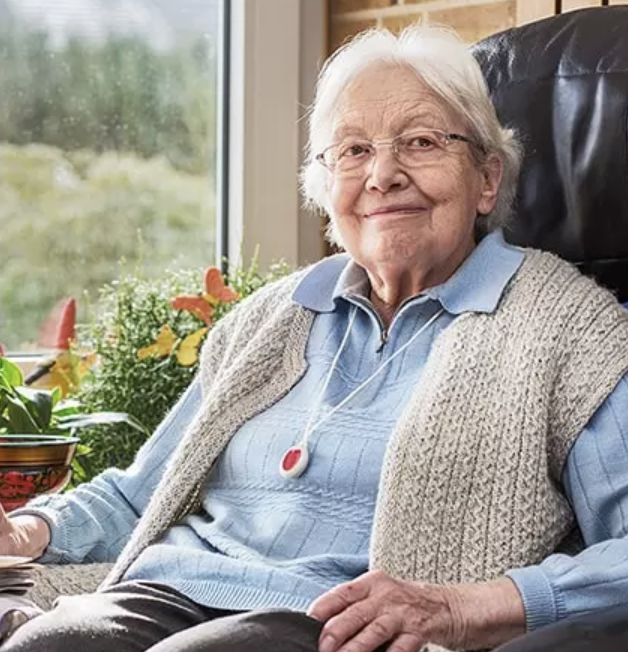
As the golden years unfold, so does the wisdom of prioritizing comfort without compromising on style. For seniors facing specific mobility or health considerations, adaptive clothing emerges as a practical and fashionable solution. Let's delve into the world of adaptive fashion, offering insights into clothing options tailored to meet the unique needs of our cherished senior community.
Understanding adaptive clothing:
Adaptive clothing is designed with the specific challenges of seniors in mind, addressing issues related to limited mobility, arthritis, and other health considerations. The focus is on functionality, ensuring that individuals can easily put on and remove garments without unnecessary exertion or discomfort.
Find YOUR ideal care home NOW!
Easy on, easy off:
One of the key features of adaptive clothing is the incorporation of thoughtful closures and fastenings. Magnetic closures, Velcro, and large buttons replace traditional zippers and small buttons, making dressing and undressing a seamless process. This is particularly beneficial for individuals with arthritis or limited dexterity.
Comfort in fabric choices:
Adaptive fashion also places emphasis on the choice of fabrics. Soft, breathable materials are favored, providing comfort throughout the day. Additionally, adaptive clothing often includes features like tagless labels to minimize skin irritation and enhance overall wearability.
Stylish designs with a purpose:
Contrary to the misconception that adaptive clothing compromises style, today's designs effortlessly combine fashion and function. Stylish patterns, modern cuts, and a range of color options allow seniors to express their individuality while enjoying the benefits of adaptive features.
Footwear considerations:
Footwear is a crucial aspect of adaptive fashion. Shoes with adjustable closures, slip-resistant soles, and designs accommodating swollen feet ensure both safety and style. Easy-to-wear options like Velcro straps or slip-on styles provide convenience without sacrificing aesthetics.
Tips for building a functional wardrobe:
-
Layering solutions: Opt for adaptive layering pieces that are easy to put on and take off, allowing seniors to adjust to varying temperatures without hassle.
-
Dressing for occasions: Invest in adaptive clothing suitable for different occasions, ensuring seniors can maintain their sense of style whether at home, social events, or medical appointments.
-
Personalized accessories: Enhance outfits with accessories like scarves or jewelry that add a personal touch without compromising on comfort.
-
Consulting healthcare professionals: Consider seeking advice from healthcare professionals or occupational therapists who can provide personalized recommendations based on specific mobility or health considerations.
Empowering independence:
Adaptive clothing goes beyond fashion; it empowers seniors to maintain independence in their daily routines. By removing the barriers associated with traditional clothing, adaptive fashion ensures that individuals can dress themselves comfortably, fostering a sense of autonomy and dignity.
Key Features of Adaptive Clothing for Seniors
| Feature | Benefit | Ideal For |
|---|---|---|
| Magnetic Closures | Allows for easy fastening without small buttons or zippers. | Individuals with arthritis or limited dexterity. |
| Velcro Straps | Quick and adjustable fastening, reducing strain on hands. | People with Parkinson’s, stroke recovery, or hand tremors. |
| Elastic Waistbands | Provides flexibility and comfort while eliminating tight restrictions. | Seniors with swelling (edema) or mobility restrictions. |
| Tagless Labels | Prevents skin irritation for sensitive individuals. | Those with sensory sensitivities or skin conditions. |
| Slip-Resistant Footwear | Reduces the risk of falls and provides better stability. | Elderly individuals with balance issues. |
| Breathable Fabrics | Ensures all-day comfort by reducing heat and moisture buildup. | People prone to sweating or skin irritations. |
In conclusion, adaptive clothing stands as a testament to the evolving landscape of fashion, where style seamlessly intertwines with functionality. As the fashion industry embraces the diverse needs of seniors, adaptive clothing becomes a beacon of comfort, allowing our cherished seniors to navigate each day with confidence and flair.
FAQ:
1. What is adaptive clothing?
Adaptive clothing is designed with special modifications to assist seniors and individuals with limited mobility, making dressing easier and more comfortable.
2. Who can benefit from wearing adaptive clothing?
Seniors, people with arthritis, Parkinson’s, stroke survivors, and individuals recovering from surgery or injury can benefit from adaptive clothing.
3. How does adaptive clothing improve daily life?
It reduces physical strain during dressing, enhances comfort, promotes independence, and prevents skin irritation or injuries.
4. What are the best fastenings for easy dressing?
Magnetic closures, Velcro straps, and elastic waistbands are ideal as they replace traditional buttons and zippers.
5. Are adaptive clothing options stylish?
Yes! Modern adaptive clothing comes in stylish patterns, trendy designs, and various color options to maintain personal style.
6. What types of shoes are best for seniors with mobility issues?
Slip-resistant shoes with Velcro fasteners and wide openings are the best options for comfort and fall prevention.
7. Where can I buy adaptive clothing for seniors?
Many online stores, medical supply shops, and specialty clothing brands offer adaptive fashion for seniors.
8. How do caregivers benefit from adaptive clothing?
Caregivers can assist seniors more easily with dressing, reducing physical strain and making dressing a faster process.
9. Is adaptive clothing expensive?
It depends on the brand, but many affordable options exist, especially for basics like easy-dress tops and slip-on shoes.
10. Can I make traditional clothing adaptive?
Yes! Tailors or DIY solutions like adding Velcro, magnetic buttons, or elastic bands can make regular clothes adaptive.
We are here to help you choose a care home or facility best suited to your needs. Do not hesitate to contact us on the following number: 0230 608 0055 or fill out this form.
Do you need a care home for yourself or your loved one?
Share this article :
Latest posts
You are looking for an establishment for your loved one ?
Get availability & prices
Fill in this form and receive
all the essential information
We would like to inform you of the existence of the opposition list for telephone canvassing.

.webp)









